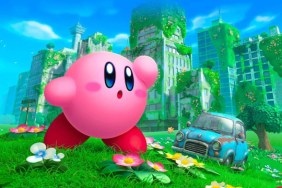Plenty of juju, not enough mojo.
The platform genre is infamous for horrible gluts of overproduction. Back in the
side-scrolling days of the 16-bit systems, it was commonplace for every other
title to feature another stereotypical cartoon character jumping around like an
idiot while collecting god-knows-what in order to save some stupid girl. If only
I could have found and broken that mold…the pain I would have thwarted!
Things didn’t change much with the addition of a third dimension, and the
32-bit rigs suffered from a deluge of platform games that few remember and even
fewer want to remember. Croc 2,
anyone?
So here
we are with the next-gen systems, which so far haven’t had too many faceless
platformers. Tak and the Power of Juju apparently hopes to
change this. The game tightly follows every old trick in the book, but nothing
here will help it stake a claim in the crowded market.” Aimed at a younger market,
Tak is easily overshadowed by the PS2 heavyweights Ratchet,
Clank and Jak, and the Gamecube’s resident mascot-killer,
Mario.
The premise behind Tak is innocent enough.”Tak, a little
jungle boy with bad posture, is seemingly the one least likely to accomplish
anything.”Yet he has been deemed by fate to brave insurmountable odds to save
his tribe, the Pupanunu people, who have all been turned into sheep by the villainous
dark shaman, Tlaloc.”Lots of funny names in this game.
Ancient prophecy foretold of the bravery of a fabled warrior who would save his people from destruction.”One look at Tak and you realize he’s got his work cut out for him.
Likewise, this game has its work cut out for it. There’s no major hook here
to redefine platform gaming, like in recent failed experiments of time manipulation
(Blinx) and egg-rolling
(Billy Hatcher).
Clearly, a game does not have to have a “hook” to make it special, but it helps
out considerably.
Coincidentally enough, Tak does don the finely feathered
garbs of a chicken suit just like Billy Hatcher.”But instead of Billy’s bright,
plumed pompadour, Tak’s suit looks humorously ghetto – which actually helps
out considerably defining who Tak is as a character.
 Tak isn’t
Tak isn’t
as detestable as he might appear at first glance.”The voice-acting is done well
enough to add the right character to help you empathize with the little guy.”
He has some annoying catch phrases, but that pathetic suit really makes you
feel sorry for the lout.
Even though Tak himself isn’t so bad, his adventures are just terribly mundane
and ubiquitous.”Sprawling levels with confusing objectives (ie. no map) and
tons of familiar gameplay abound.”You perform lots of double jumps and you partake
in scads of moving puzzles ” essentially the same stuff you’ve been doing since
Super Mario 64.” Many of the puzzles are old-hat retreads,
like luring things around and riding on the backs of big silly creatures.
More than anything else, you collect stuff. This might be a hallmark of the
genre, but it gets old very quickly in Tak. When coupled with
the awkward level design, Tak‘s gameplay winds up mired in
rote item retrieval. It’s just not very fun, and at this point, not very creative.
The graphics are okay, at least, roughly the same on both consoles though
admittedly smoother on the Gamecube. The painted textures give the game some
artistic flair, but the overly simple environments mask the effort.”There is
a vibrant and colorful palette; the cartoon look and feel are clearly aimed
at a young audience. The cutscene animations are sharp and well done with plenty
of lighthearted cartoony fun, but the music and sound suffer from being overly
generic and forgettable.
The same goes for Tak as a whole. Problematically, it
just doesn’t do too anything new and doesn’t space itself out from
the crowd.” It feels like you’ve played this game before and you probably have
– in better, more interesting forms.”With all the strong holiday platformers
already released, a weaker game like Tak and the Power of Juju
will likely disappear. It won’t be a huge loss.

-
Tak not as lame as he seems
-
Decent graphics
-
Basic platformer
-
Basic platformer
-
Typical environments and bad level design
-
Collection hell







